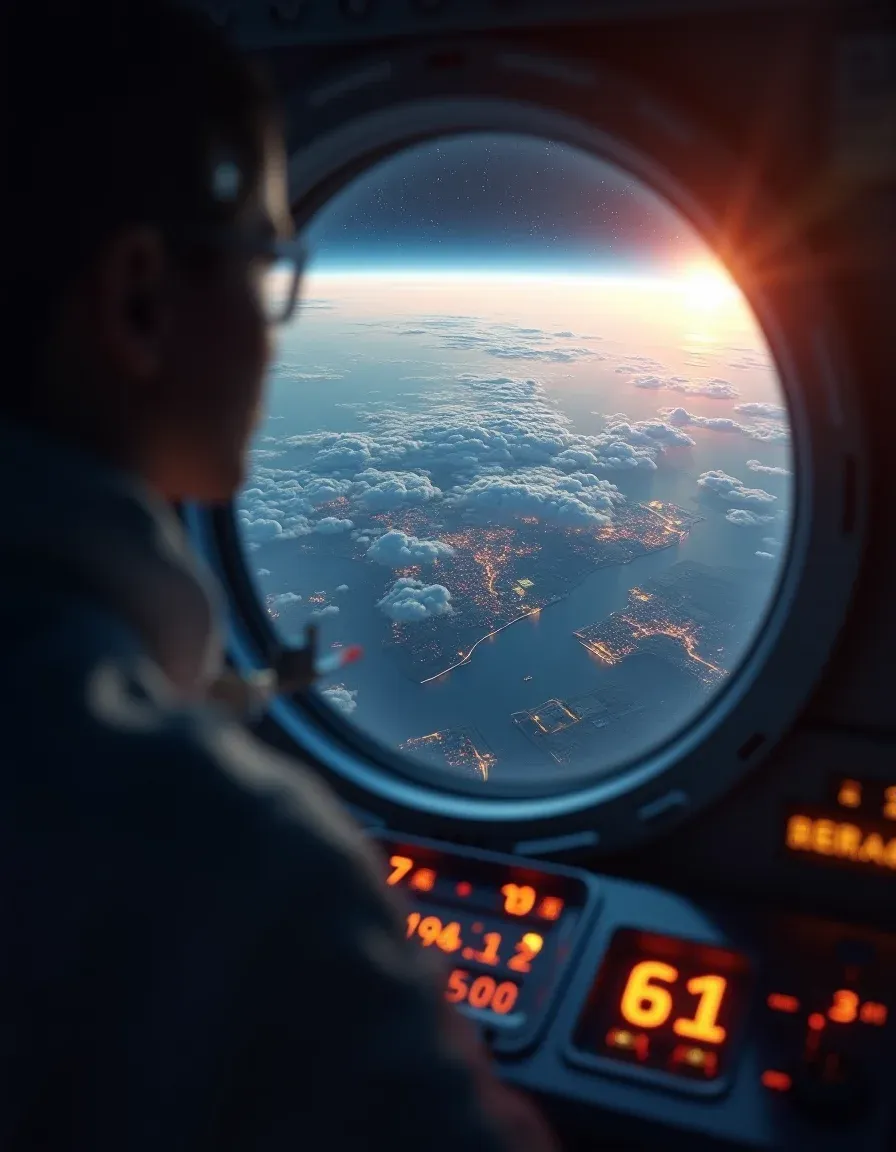Would Earth Look Like Fast-Forward from a Time-Dilated Satellite?
Imagine watching Earth in slow motion from a satellite as gravity stretches time and light reddens. Learn why you’d see smooth slow-motion, not choppy frames, and when instruments would be needed to actually detect the planet.

The question, in plain words
Imagine you're in a satellite where time runs at a different rate than on Earth. If clocks on Earth tick more slowly (because of gravity), would you watch people walking in slow motion, see events skip frames, or just notice weird colors?
Short answer: youd see things slowed down and redshifted — not "choppy" — and only extreme gravity would make them disappear from visible light.
What's really going on
- Gravity changes how fast clocks run. In general relativity, clocks deeper in a gravitational well tick slower than clocks farther out. So a satellite high above Earth experiences time a bit faster than someone on the surface.
- Light carries the timing info. Photons traveling from Earth up to your satellite get gravitationally redshifted: their frequency drops. That means visual signals arrive at a slower rate and shifted toward longer (redder) wavelengths.
- That doesn't make the image "choppy." Electromagnetic waves are continuous. You wont miss frames — you'll see a smooth but slowed version of events. The wave picture explains why — it's not discrete snapshots being dropped.
What youd actually notice
- Things on Earth would look like they're happening in slow motion from your satellite.
- Colors shift to red (redshift). If the effect is tiny, the shift is imperceptible. If it's extreme, visible light might move into infrared or even radio, so your eyes wouldn't detect it and you'd need instruments.
- Relative motion also matters. If the satellite moves fast, special-relativistic Doppler effects can speed things up or slow them down further, depending on direction.
Some people point to GPS as a real-world example: satellite clocks tick faster from weaker gravity but slower from orbital speed. The net correction for GPS satellites is about +38 microseconds per day — tiny, but crucial for accuracy.
Edge cases: when it gets dramatic
If you got close to something extreme, like a black hole, time differences become huge. You could literally watch the outside universe race by or see the nearby world crawl to a stop — and the light might be shifted far beyond the visible band.
Want to read more? See the Wikipedia page on gravitational time dilation for the physics behind this: https://en.wikipedia.org/wiki/Gravitational_time_dilation . For GPS and the practical corrections, check: https://en.wikipedia.org/wiki/Global_Positioning_System#Relativity .
Bottom line: You'll see Earth slowed and reddened — smooth, not choppy — unless you're near truly extreme gravity, where things get wild and instruments become necessary.




